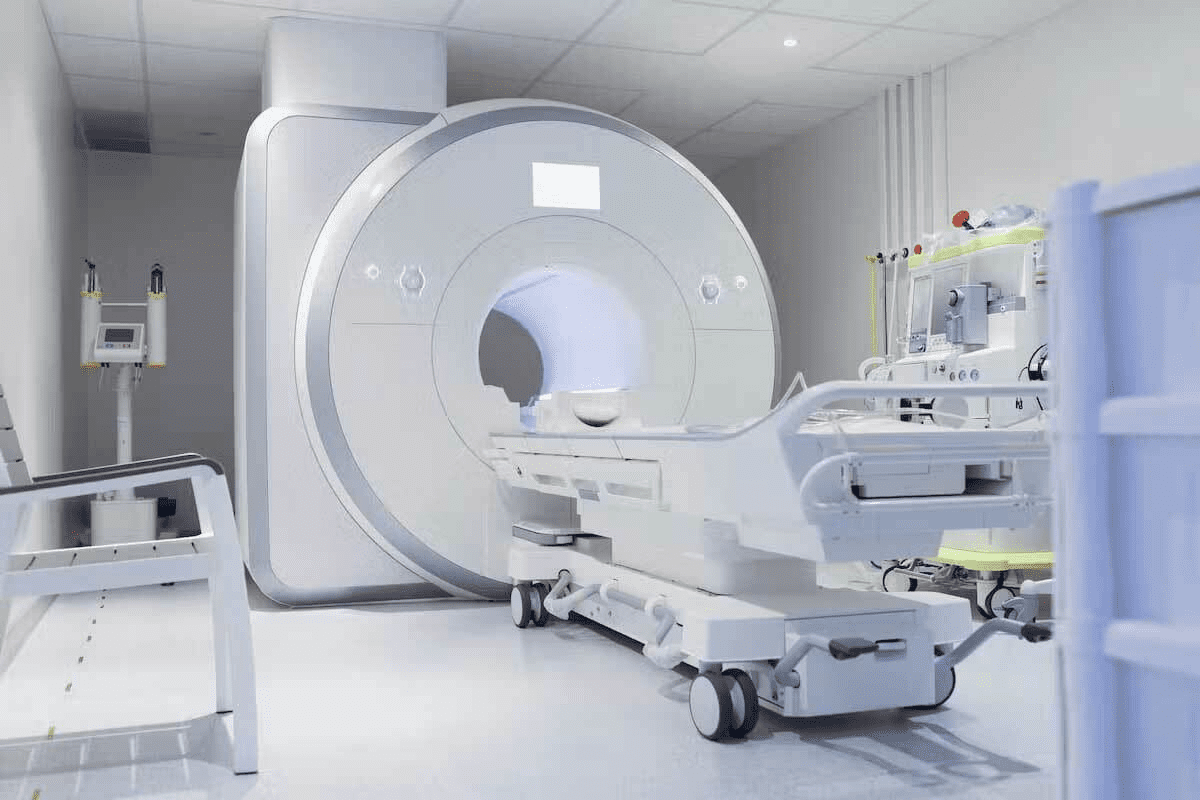Last Updated on November 26, 2025 by Bilal Hasdemir

At Liv Hospital, we understand how challenging back pain from disc herniation or nerve compression can be. A lumbar interlaminar epidural steroid injection is a safe and minimally invasive treatment that delivers corticosteroid medication directly to the affected area, reducing inflammation and easing pain.
This approach is especially beneficial for patients who haven’t found relief through other treatments. Understanding how a lumbar interlaminar epidural steroid injection works, and how often it can be safely administered, is key to effective pain management and improved quality of life.
Our team ensures that each patient receives personalized guidance, helping them get the most benefit from their lumbar interlaminar epidural steroid injection while promoting safe and lasting recovery.
Key Takeaways
- Epidural steroid injections are a common treatment for radiculopathy caused by disc herniation or degenerative changes.
- Guidelines typically recommend a maximum of three to four injections per year at a given spinal level.
- The efficacy and safety of these injections have been subjects of extensive study.
- Corticosteroid medication is delivered directly into the epidural space to target inflammation.
- These injections are specially helpful for people with a herniated or slipped disc.
What Is a Lumbar Interlaminar Epidural Steroid Injection?

A lumbar interlaminar epidural steroid injection is a medical procedure. It involves injecting corticosteroid medication into the epidural space around the spinal cord. This method is used to manage back pain caused by disc herniation or nerve compression.
By delivering corticosteroids directly into the epidural space, this injection targets inflammation and promotes healing. It provides a focused approach to reduce inflammation and aid in recovery.
The Anatomy of the Epidural Space
The epidural space is a space outside the dura mater, a protective membrane around the spinal cord. It contains fat and blood vessels, acting as a cushion for the spinal cord. Knowing the anatomy of this space helps us understand how epidural steroid injections work.
How Corticosteroid Medication Targets Inflammation
Corticosteroids are strong anti-inflammatory agents. They work by stopping the production of inflammatory cytokines. By reducing these cytokines, corticosteroids decrease swelling and pain in the affected area.
This action is key in providing relief to those with back pain due to inflammation.
Minimally Invasive Approach for Back Pain Management
Lumbar interlaminar epidural steroid injections are a minimally invasive way to manage back pain. Unlike surgery, these injections don’t require cutting into tissues. This makes them a good choice for those who want to avoid more invasive procedures.
The precision of delivering medication directly into the epidural space makes the treatment more effective.
| Aspect | Description | Benefit |
| Procedure | Injection of corticosteroid medication into the epidural space | Targeted approach to reducing inflammation |
| Anatomy Involved | Epidural space surrounding the spinal cord | Cushions the spinal cord and facilitates medication delivery |
| Medication Effect | Corticosteroids inhibit inflammatory cytokines | Reduces swelling and pain |
Herniated Disc Treatment: How Epidural Injections Provide Relief

Epidural injections are a key treatment for herniated discs. They help by cutting down inflammation around the nerves. This reduces pain and boosts function.
Herniated discs can really hurt, making everyday tasks hard. Epidural steroid injections are a gentle way to ease this pain.
Mechanism of Action for Disc Herniation
Epidural injections work by putting corticosteroids near the nerves. This cuts down inflammation, which is a main cause of pain in herniated discs.
Corticosteroids are strong anti-inflammatory medicines. They help shrink swelling and calm down nerves. This leads to less pain, letting people get back to their usual activities.
Cortisone Shot for Herniated Disc: Expectations
People getting a cortisone shot for a herniated disc can expect less pain and swelling. How well it works can differ, but many see big improvements.
It’s important to know what to expect from cortisone shots. They can really help with pain, but they don’t fix the herniated disc itself.
| Benefits | Limitations |
| Significant pain relief | Does not cure disc herniation |
| Reduces inflammation | Temporary solution |
| Improves function | May require repeated injections |
Limitations: Why Injections Don’t Cure the Underlying Condition
Epidural steroid injections can help with herniated disc symptoms, but they don’t fix the problem. They’re a treatment for symptoms, not a cure for the disc itself.
It’s key to know these limits to manage your hopes and make smart choices about treatment. Talk to your doctor about what’s best for you.
Interlaminar vs. Transforaminal Epidural Steroid Injection Techniques
It’s important to know the differences between epidural steroid injection techniques for treating back pain. We’ll look at the interlaminar and transforaminal methods. We’ll see what makes each unique and when they’re best used.
Anatomical Differences Between Approaches
The main difference between these techniques is how they reach the epidural space. The interlaminar method injects between vertebrae laminae. The transforaminal method targets a nerve root by going through the foramen.
Interlaminar Approach: This is good for pain in the middle or on both sides. It uses X-rays to guide the injection into the right spot.
Transforaminal Approach: This is better for pain on one side or when you need to hit a specific nerve. It injects through the foramen where the nerve exits.
When Transforaminal Injections Are Preferred
Transforaminal injections are best when you need to target a specific nerve root. This method is more precise, delivering medication right to the problem area.
Precision and Medication Delivery Comparison
Transforaminal injections are more precise because they aim at a specific nerve root. Interlaminar injections cover a wider area in the epidural space.
| Characteristics | Interlaminar | Transforaminal |
| Approach | Between laminae | Through neural foramen |
| Precision | Less precise, broader coverage | More precise, targets specific nerve root |
| Preferred Use | Central or bilateral radicular pain | Unilateral pain, specific nerve root involvement |
How Often Can You Get Epidural Steroid Injections?
It’s important to know how often you can get epidural steroid injections for back pain. We must weigh the benefits of getting them again against the risks of too much corticosteroid.
Current Medical Guidelines on Injection Frequency
Medical guidelines suggest getting these injections no more than three or four times a year at the same spinal spot. This rule helps us get the most benefit while avoiding side effects.
Guideline Recommendations
| Guideline | Recommendation |
| Maximum Injections Per Year | 3-4 |
| Spinal Level Consideration | Specific level injections limited |
The 3-4 Times Per Year Recommendation
The rule of three or four injections a year comes from studies and expert opinions. It helps manage pain well and lowers the chance of corticosteroid side effects.
Factors That Influence Injection Scheduling
Several things can affect when you get epidural steroid injections. These include how you reacted to past injections, how bad your pain is, and your overall health. We look at these when deciding how often to inject you.
- Patient response to previous injections
- Severity of the condition
- Overall health status
By thinking about these factors and following medical guidelines, we make sure these injections are safe and work well for you.
Safety Profile of Lumbar Interlaminar Epidural Steroid Injection
Exploring the safety of lumbar interlaminar epidural steroid injections is key. We look at common side effects and rare complications. These injections are usually safe and effective for back pain. But, knowing their safety is important for both patients and doctors.
Common Side Effects After the Procedure
Most people do well with these injections. But, some might feel pain or discomfort at the site, headaches, or facial flushing. We also warn about temporary back pain or stiffness.
The table below shows common side effects and how long they last:
| Common Side Effects | Typical Duration |
| Pain at injection site | 1-3 days |
| Headache | 1-2 days |
| Facial flushing | 1-3 days |
| Increased pain or stiffness | 2-5 days |
Rare but Serious Complications to Be Aware Of
Though rare, serious issues can happen. These include infection, nerve damage, or spinal cord injury. We stress the need for proper screening and clean technique to avoid these risks.
Some serious but rare complications are:
- Infection (e.g., epidural abscess)
- Nerve damage or neuropathy
- Spinal cord injury
- Adrenal suppression due to repeated steroid injections
Patient Screening and Contraindications
Screening patients is vital to reduce risks. We check for things like active infections, bleeding disorders, or allergies. We also look at the patient’s overall health and any other treatments they’re on.
By choosing the right patients and tailoring treatment, we make these injections safer and more effective.
Effectiveness of Steroid Injections for Slipped Disc Conditions
Many people wonder about the use of steroid injections for slipped discs. These injections are common for managing pain and swelling caused by slipped discs.
Short-term Pain Relief Expectations
Steroid injections can offer quick short-term pain relief for slipped disc patients. They work by reducing swelling around the nerves, easing pain and improving movement. Many patients see a big improvement in just a few days after the injection.
These injections are very helpful for those with sudden pain or who haven’t gotten better with other treatments. They help reduce pain and swelling, allowing patients to move more easily and start physical therapy. This is key for getting better.
Long-term Outcomes and Success Rates
Even though steroid injections work well in the short term, their long-term outcomes can vary. Some people may stay pain-free for months or even years. But others might need more treatments as the pain comes back.
The success of these injections depends on several things. These include how bad the condition is, how well the injection was done, and the patient’s health. Studies show many patients get a lot of relief, but results can differ from person to person.
Combining Epidural Injections with Conservative Treatments
Using epidural injections along with other treatments can lead to better results for slipped disc patients. Other treatments might include physical therapy, changing how you live, or trying things like acupuncture or chiropractic care.
By adding epidural injections to a treatment plan, doctors can tackle both immediate pain needs and long-term goals. This approach helps patients get better faster and lowers the chance of future problems.
The Procedure: What to Expect During Your Epidural Injection
The epidural injection process is straightforward and has been improved to ensure comfort and safety. Knowing what to expect can help reduce anxiety and make the experience easier.
Pre-procedure Preparation Steps
Before the epidural injection, we take several steps to prepare:
- We review your medical history to check for any risks or issues.
- Some tests, like blood work or imaging, might be done to confirm your diagnosis and health.
- We tell you which medications to avoid, like blood thinners, to lower risks.
- Instructions on fasting or dietary restrictions are given, if needed.
Step-by-Step Injection Process
The injection process is guided by fluoroscopy to place the corticosteroids accurately. Here’s what happens:
- You’ll lie on your stomach or side, depending on the procedure’s needs.
- The skin at the injection site is cleaned and sterilized.
- A local anesthetic is given to numb the area, making it less painful.
- The needle is guided into the epidural space using fluoroscopy.
- After confirming the needle’s position, the corticosteroid is injected.
Post-injection Recovery and Activity Guidelines
After the procedure, you’ll be watched for any immediate reactions. We then give you guidelines for recovery:
- Rest for the rest of the day and avoid hard activities.
- Temporary soreness at the injection site can be managed with ice or pain relievers.
- Follow-up instructions are given, including when to start normal activities and watch for complications.
Understanding the epidural injection process, from start to finish, helps patients feel more confident during their treatment.
When to Consider Alternative Treatments for Herniated Discs
Epidural injections may not work for everyone with herniated discs. Some people might not see enough relief, or their pain could get worse. This means looking into other ways to manage the pain is important.
Signs Epidural Injections Aren’t Working
If you’re not feeling better after epidural injections, it’s a sign they’re not working. Not seeing improvement in how you move or do daily tasks is another clue. It’s time to think about other treatments.
Key indicators that epidural injections are not effective include:
- Continued or increased pain levels
- Lack of improvement in mobility and daily functioning
- Worsening symptoms or new neurological deficits
Non-invasive Alternative Approaches
For those who don’t get enough relief from injections, there are other ways to try. These include:
- Physical therapy: Exercises and stretches to boost flexibility and strength
- Lifestyle changes: Adjusting diet, exercise, and stress levels
- Alternative therapies: Acupuncture, chiropractic care, or other treatments
Surgical Options for Persistent Disc Problems
If injections and other non-invasive methods don’t help, surgery might be needed. Surgery can fix the disc problem and help a lot of people.
Surgical options may include:
- Discectomy: Removing the herniated disc material
- Spinal fusion: Stabilizing the spine by fusing vertebrae
- Microdiscectomy: A small surgery to remove the herniated disc material
Talking to a healthcare professional is key to finding the right treatment. They can help based on your specific situation and medical history.
Conclusion: Making Informed Decisions About Epidural Steroid Injections
We’ve looked into lumbar interlaminar epidural steroid injections. We’ve talked about how often they’re used, their safety, and how well they work. This knowledge helps patients make informed decisions about their treatment.
Epidural steroid injections are a helpful treatment, but knowing their pros and cons is key. It’s important to think about the benefits and risks. Also, looking at other treatment options is wise. This way, people can choose the best care for themselves.
When we talk about using epidural steroid injections for back pain, it’s clear they help many. Being well-informed and working with healthcare providers is key. This helps people get the most out of their treatment and achieve the best results.
FAQ
What is a lumbar interlaminar epidural steroid injection?
This treatment involves injecting corticosteroids into the space around the spinal cord. It aims to reduce inflammation and ease pain.
How often can you get epidural steroid injections?
Medical guidelines suggest getting these injections no more than three or four times a year. This is for the same spinal level.
What is the difference between interlaminar and transforaminal epidural steroid injection techniques?
The interlaminar method injects corticosteroids between vertebrae. The transforaminal method targets a specific nerve root through the foramen.
Can epidural steroid injections cure a herniated disc?
No, these injections don’t fix a herniated disc. They help by reducing inflammation around the nerve roots.
What are the common side effects of epidural steroid injections?
Side effects often include temporary pain at the injection site.
How effective are steroid injections for slipped disc conditions?
Steroid injections can give quick pain relief by reducing inflammation. But, their long-term effect can vary.
What should I expect during an epidural injection procedure?
First, you’ll have a detailed medical check-up. Then, the injection is done under X-ray to place the corticosteroids correctly.
When should I consider alternative treatments for herniated discs?
If injections don’t help, try other treatments. This could be physical therapy, changing your lifestyle, or surgery.
Are there any serious complications associated with epidural steroid injections?
Yes, though rare, serious issues like infection or nerve damage can happen. It’s key to know the risks and who should avoid them.
Can I combine epidural injections with other conservative treatments?
Yes, mixing injections with treatments like physical therapy and lifestyle changes can improve results.
References:
Bamias, A., et al. (2017). Current clinical practice guidelines for the treatment of renal cell carcinoma: A systematic review. Cancer Treatment Reviews, 53, 107-116. https://www.ncbi.nlm.nih.gov/pmc/articles/PMC5469586/






